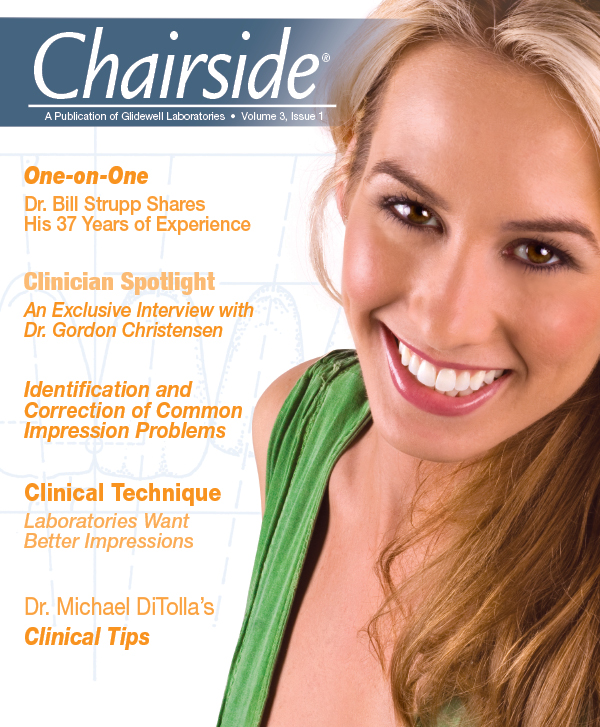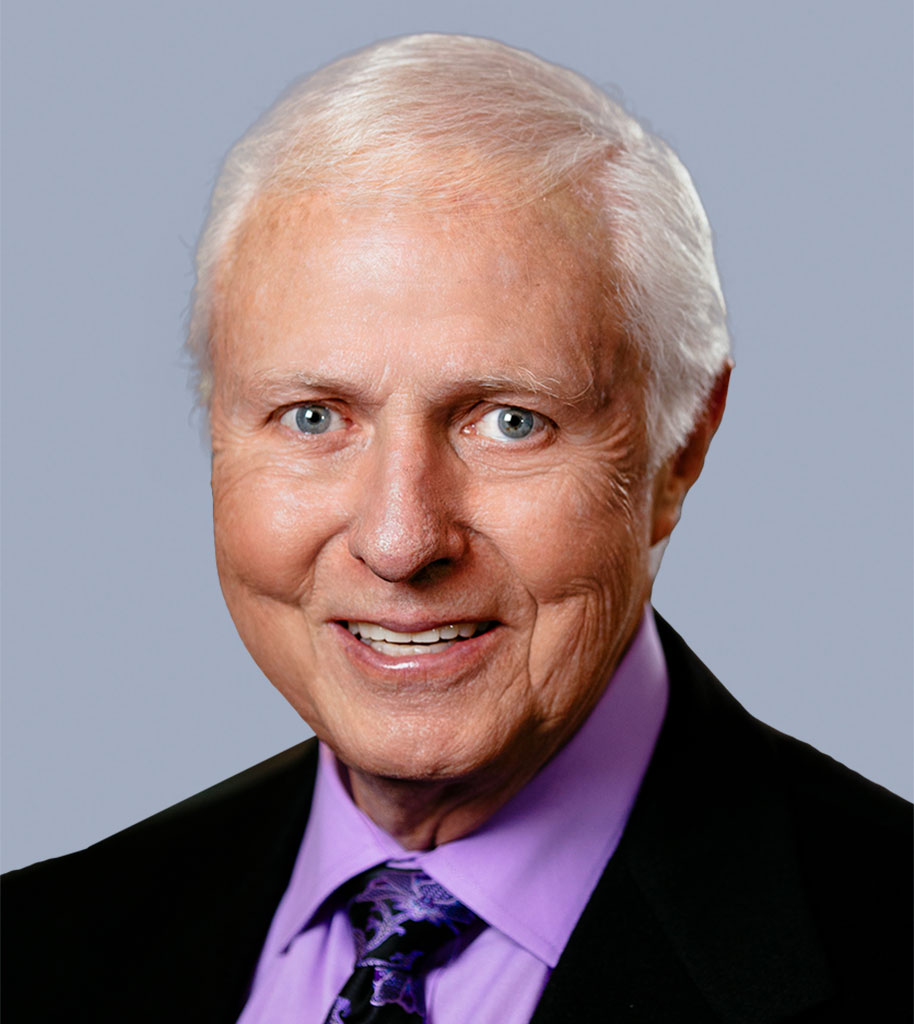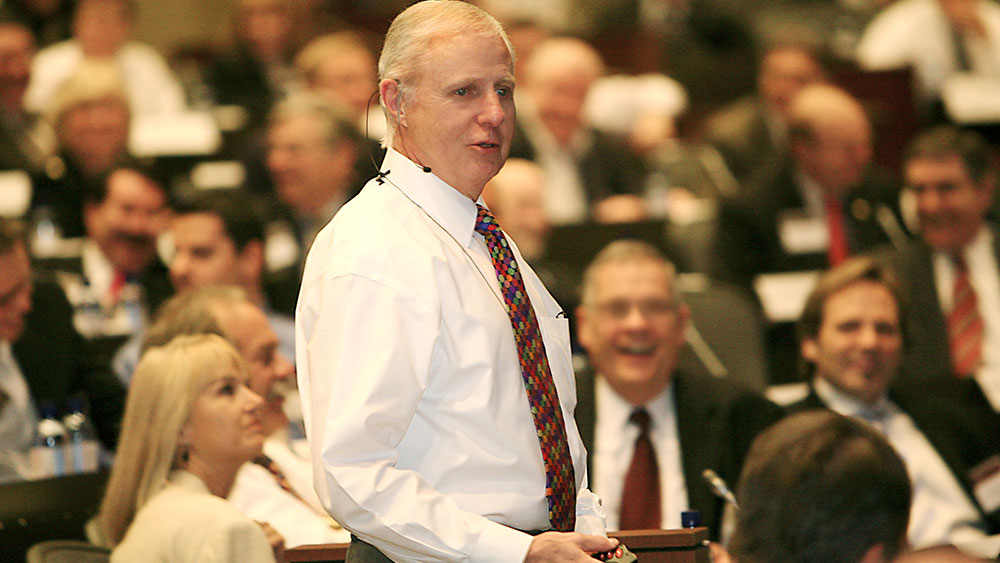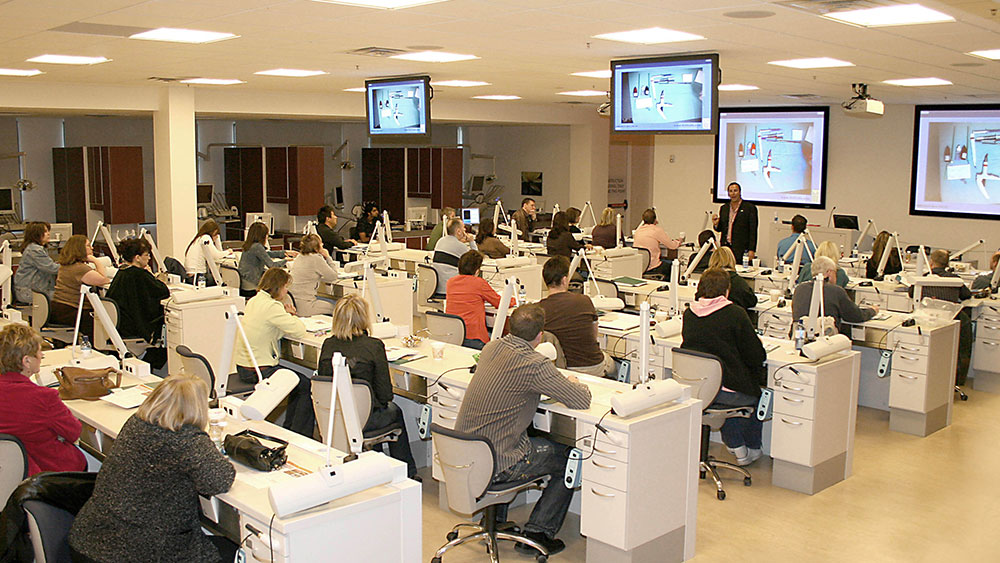Clinician Spotlight: Dr. Gordon Christensen
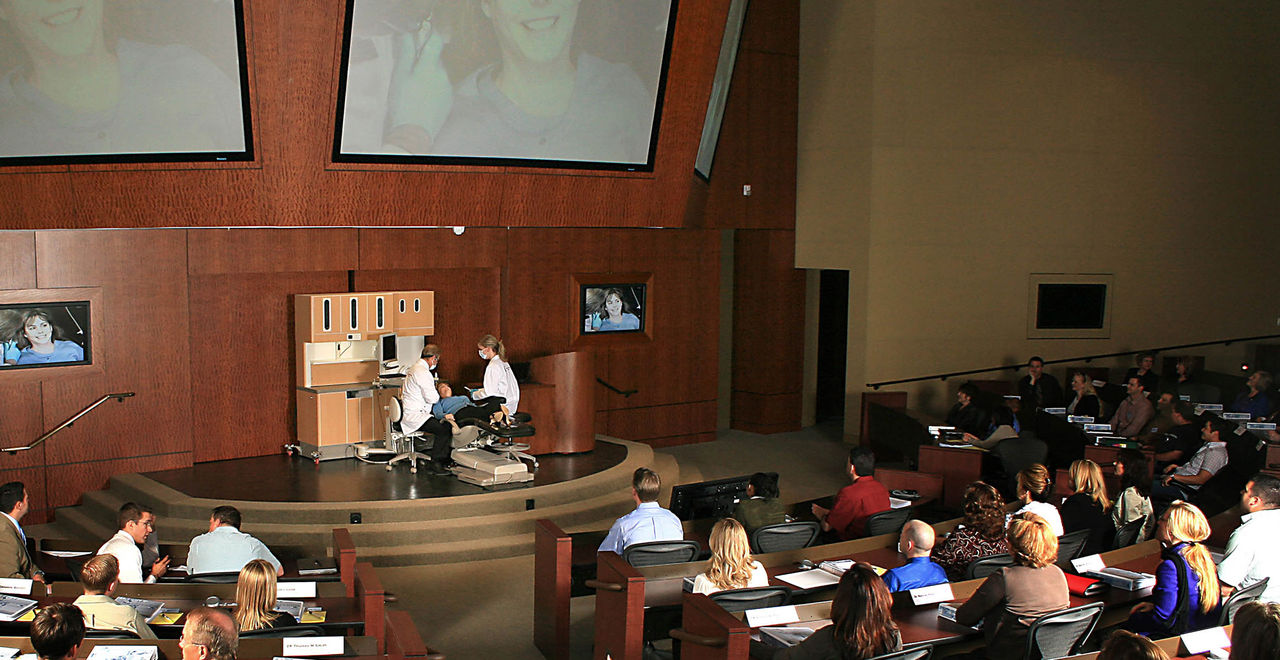
Dr. Michael DiTolla: First off, I’d like to welcome you, Dr. Christensen. It’s a real privilege of mine — I still remember the day I got the letter in the mail where it said that I could now be, after a seven-year wait, a CRA evaluator. It’s always been something that I’ve been very proud of. And for our readers who aren’t quite sure, can you explain just a little bit about what CRA does in terms of testing products?
Dr. Gordon Christensen: Dr. Rella Christensen and I initiated CRA in 1976 in direct relation to my frustration with products that were getting on the market with minimal or no evaluation. There was no way to know if a product would turn out to be a success or failure. As a result, we started CRA, which is a nonprofit company accomplishing objective clinical evaluations of products. It’s been a great success under the direction of Rella Christensen; today we evaluate about 700 products a year.
We’re actually going through a major change right now. Rella has been the director of CRA for 27 years and she wants to focus on doing in-depth research on caries and prevention. It’s really exciting and I think she’ll probably find out many of the things about caries that we don’t know — when to cut, how to cut, how deep to cut, how to disinfect if you want to disinfect, and so forth. As of January 1, 2008, the new name for Clinical Research Associates is Clinicians Report™, and Rella’s nonprofit, in-depth research organization is named TRAC Research.
MD: I asked you once at a course, probably 15 years ago, what the biggest failures you had seen in restorative dentistry were. At that time, you answered Maryland Bridges and double abutted bridges. Is that still your same answer today?
GC: They’re still having plenty of Maryland Bridges that are breaking, as far as I know. I did a lot of cantilever bridges for years, too. I made a video of it called “Dr. Christensen’s Most Frequent Failures & How to Avoid Them.” I included those couple of things you mentioned, and I included posts that were too short, grafting and other failures. There are a lot of things that I think are really fallacies that we continue to do.
MD: I own that DVD, and I was proud of you for putting that out there and talking about your biggest mistakes. There are some people that say lecturing is just showing your best cases, but it was nice to see you admit that you maybe hadn’t done some things right. I know you have some experience with microscopes in dentistry, and I’ve been a longtime loupes user who’s kind of sat on the sidelines when it comes to dental microscopes. It sounds like you’ve always kind of stayed away from incorporating them on a daily basis, and I’m just wondering how you feel about scopes.
GC: I’ve been involved in the past with [Dr.] David Clark, who is now on the board of directors of Clinicians Report (formerly CRA). David is probably the microscope guru of this country, having started the microscope academy [Academy of Microscope Enhanced Dentistry] and of course has been very supportive of microscope use. I have a Global scope, but it’s mainly for education. David uses scopes routinely, and he uses them for everything. I think as time goes on, we will find that more dentists lean towards them, but candidly here’s what I’m finding. I have an informal survey I do in my courses, and one of the questions is: “Of the following technologies — which are imperative to have, which are elective, and which are just a joke?” The microscope, in my opinion, falls into the middle category. It’s an adjunct to, but not a replacement for, many things unless you’re really addicted to it. In that case, you really want to make it work because it does slow you down enormously, as you know, when you first start it.
MD: It sounds like by your own test — the “faster, easier, higher quality, cheaper” — it fails the “faster,” probably fails the “easier,” possibly fails the “quality,” and fails the “cheaper.”
GC: It’s like gold foil — it is better, but it isn’t faster, easier or less expensive.
MD: Well, let me use that to transition to another topic. I purchased a Cadent iTero™ digital impression unit about five months ago. And my initial impression is that it certainly is not faster than a conventional polyvinylsiloxane impression. It’s definitely not easier. I do think it is higher quality, but it’s not any cheaper. I’ve also got a [Sirona®] CEREC® 3 unit so I can see how fast intraoral scanning can be. What do you think about digital impression taking and where it’s going to head?
GC: We just finished a pilot study. The study had several bridges and some crowns in it that were all made in two ways. They were made either using the Cadent iTero or they were fabricated using conventional polyvinylsiloxane techniques. The study was blind; dentists did not know which bridge or crown had been made with a digital impression and which one had been made the conventional way. It was interesting; almost all of the digital impressions were chosen and cemented instead of conventional ones, which I thought was pretty impressive. There is definitely a learning curve. It takes a while to learn how to use a large camera. 3M™ ESPE™ LAVA™ Chairside Oral Scanner is another digital impression making device. It has a smaller camera and with their excellent marketing it should make an impact. However, I told 3M that this is not going to be for everybody and it’s not going to happen fast. I think this concept will be for more dentists than in office milling of restorations, where you’ve got an enormous front-end load rather than the $18,000 that digital impression devices are costing at the moment. 3M’s scanner will probably cost some more. I see it as slowly getting into the clinical day-to-day dentist arena, but I don’t see dentists rapidly switching over because it’s a new technology.
MD: You’ve been quoted several places saying 90% of U.S. crown and bridge impressions do not have the margins clearly represented 360 degrees around the periphery. And now, being associated with a laboratory, I can tell you that, “You’re correct, sir!” And I wonder, do you think those dentists who are taking sloppy conventional impressions are going to take better digital impressions?
GC: No, they will be worse (laughs).
MD: That’s what I thought.
GC: You know what it’s like with CEREC; you own one. I just went down to Dallas and worked a day with Evolution E4D™ that’s coming out. It does not require powder; at this point CEREC does. You know as well as I, if you can’t see the margin and you can’t get an impression with a conventional technique, then you certainly can’t get it with a digital one. Furthermore, the lab may even have a harder time faking the digital impression than they would with the conventional one. We still have two major problems with restorative dentistry techniques. The first is tissue management. Digital impressions require better tissue management than conventional impressions. Secondly, make the prep right. In the current Clinicians Report study that Rella is coordinating, many of the impressions had to go back. These are experienced practitioners. They are not beginners. Many of the preps could be better, no question about it. I just made a new video, “Fixed Prosthodontic Tooth Preparations,” in which I compared porcelain fused to metal preps and all-ceramic preps. I’m finding as I alter some of my PFM preps that I did 20 to 25 years ago to all-ceramic preps, I have to redesign my preps and make them deeper because they need the additional reduction for the all-ceramic restorations. We’re still going to see the problem with digital impressions if dentists abuse or ignore tissue. It certainly doesn’t help when preps are lacking. The preps have got to be even more meticulous.
MD: Exactly. From our standpoint, if the dentist gives us a halfway decent prep and an almost perfect impression, we can work with that. But even the best prep in the world with a half-assed impression is going to be almost impossible for us to do.
GC: Almost impossible. Ric, one of our lab techs, showed me this morning a prep he received. It was from a prosthodontist in California. After we both looked at it together, I said, “What are you going to do with that prep?” He said, “You know, we’ll make some kind of thing on it.” It’s for an all-ceramic crown and it’s got sharp angles on it and it’s got undercuts, and this is not a general dentist. Not that general dentists are worse, but the practitioner ought to be better.
MD: You would think so. I’ll tell you what: if he had any idea that Gordon Christensen would have been looking at his models, he would have done a little better.
GC: (Laughs.)
MD: Another thing that I had to change my mind about was no-prep veneers. Our laboratory got involved with producing no-prep veneers about three years ago. And I kind of had a mental block against these because of emergence profile issues. But as we’ve been able to make these thinner, and I’ve become better at recognizing what cases lend themselves to a no-prep — or at least to a minimal-prep, where we stay completely in enamel — I’ve been really impressed at some of the results and patients are thrilled by what we can do with no-prep and minimal-prep veneers. Yet, I have dentists say to me all the time, “What about the bump at the CEJ?” These are same dentists who are preparing feather-edge margins on a posterior tooth for a disappearing PFM margin, they have a bump at the CEJ there, but they apparently don’t care about it until it’s in the anterior. Tell me your thoughts on no-prep and minimal-prep veneers.
GC: Some time ago, Bob Ibsen of Den-Mat came to me and asked if I would make a video for Lumineers®. He was the pioneer in the field (and I know him very, very well from 30+ years), but I said no. We talked, and I said: “Bob, these no-prep veneers may be for some people, but not for everybody. I think there’s somebody in every practice who could use some no-prep veneers.” I said, “How about I make a video that gives my thoughts on the no-prep concept and not the company’s thoughts?” Bob liked the idea and I did make the video on no-preps — “‘Lumineers’ – Well-Proven, Conservative Veneers.”
Here’s how I feel about cervical overcontouring, and this might be thought provoking for your readers. Examine a lower first premolar, which everybody knows has a huge hump on its facial. Imagine this tooth in its proper position in a 12-year-old’s mouth. You have no contour at all showing supragingivally. In other words, it’s flat because the gingiva is way up coronally over this facial cervical contour. Now, imagine this tooth in the mouth of a 25-year-old. The gingiva is down at the cemento-enamel junction. Now consider that first premolar at age 65. The gingiva is now down one to two millimeters or more apical from the cemento-enamel junction. The entire cervical bulge is exposed, and you see nothing there as far as gingival irritation. My point is, and we’ve actually had studies on this over the years, the coronal contour of the marginal area has little or nothing to do with the health of the gingiva.
I can look back at all of the full-mouth rehabs I have done over the years. I’ve had flat crowns, over-contoured crowns and under-contoured crowns. There’s very little difference in the gingival health around them. Point number one is: don’t worry about no-prep veneers and overcontouring. The emergence profile that’s always been a big issue in perio, all we need to do is look at oral tooth anatomy to know that emergence profile of natural teeth does not meet the perceived ideal. Every tooth has a different contour on it. Many have no contour and the gingiva still looks healthy! I think we’ve made too big a point of gingival emergence profile.
I can look back at all of the full-mouth rehabs I have done over the years. I’ve had flat crowns, over-contoured crowns and under-contoured crowns. There’s very little difference in the gingival health around them. Point number one is: don’t worry about no-prep veneers and overcontouring.
MD: That’s interesting — fascinating, actually. So for patients who’ve got multiple diastema and short teeth, you put these veneers on with no drilling or just minor re-discing here and there and patients just absolutely love it. It’s hard not to love these types of restorations.
GC: Oh, yes. I’m convinced that for many people they have significant potential, especially since they’re three-tenths of a millimeter thick. You’re not doing much harm, and if it looks good, why not?
MD: And to me, having done a ton of prepped veneers, I feel a lot better this way. I also experience a lot less postoperative sensitivity. Let me ask you a question about crown and bridge cements. I’ve been really impressed with 3M ESPE RelyX™ Luting Cement. I have taken some restorations off recently and I am really impressed by the natural bond strength between the cement and the dentin with this type of cement. Is this the best class of cements we’ve had in a long time?
GC: No question in my mind. We were one of the very first to evaluate that. I do some consulting with 3M and other companies. We did the first 20 crowns with the cement, watched very carefully for postoperative sensitivity, and there was none. Just a few weeks ago, I cut off eight zirconia crowns that had lost some of their superficial ceramic layer. I cemented them as I normally do with RelyX Luting cement, and there was no adhesion to the zirconia. However, as I took each of them off it required a couple of burs per crown to take them off. I got into the cement layer, which was completely adherent to the tooth. In other words, I had to re-prep every tooth to get the cement off. There’s an enormous bond to the tooth and significant desensitization because essentially the liquid is a self-etch primer. You have acid etch that is present and it basically fills the dentinal canals much like a self-etch primer would. That’s why there is no sensitivity and why you achieve a high bond to tooth. It is the best thing we have ever had. It bonds to the tooth, expands and contracts like a tooth, releases fluoride, has strength that is adequate but not excessive. I don’t know what else we’re looking for in a cement!
MD: It’s just fantastic. And really, when I look at the cement I started off my career with, it’s amazing how far we’ve come so quickly. Let’s talk a little about a product that’s been growing pretty quickly here at our laboratory — in fact, it’s taken all of us a little bit by surprise — and that’s zirconia-based restorations. Dentists I think have gotten gun shy over the years to the latest and greatest all-ceramic crowns for fear of breakage or for fear of having to bond it into place rather than cement it. And when Cercon® was first launched, I put in a couple big bridges that went from a lower wisdom tooth to a lower second bicuspid with two molar pontics. And I’ve got four or five of those in the mouth and I haven’t seen them break. I’m sold on the strength of zirconia.
GC: Zirconia is certainly a strong and promising material as a substructure. Rella’s current study on 900 units of crown and bridge is showing that zirconia frameworks are serving well at two years. However, some of the superficial fired ceramic is chipping on some brands. If you go back to the original study that Dr. Peter Scherer started in Zurich, which was about seven or eight years ago, they still are waiting for a substructure to break!
The challenge in every study, including the German study and Rella’s study, is the superficial ceramic layer, the porcelain that goes on the zirconia framework. Rella has spent time with the ceramic companies trying to get them to recognize that we’re seeing more porosity and more superficial, microscopic and sometimes macroscopic chipping of this layering porcelain. The eight zirconia crowns I mentioned earlier actually had porcelain pieces cleave off the external aspect of the crowns, and the technician and I are still trying to figure out why.
The substructure of some zirconia bridges is too small. The substructure shouldn’t be as small as some of the computers are making it. As you know, they should be about three-tenths of a millimeter anterior and five-tenths of a millimeter thick in the posterior, but that’s not necessarily true. If the teeth are missing significant tooth structure, they need to be built up. Few dentists will build up teeth. Many send to labs preps that are tee-pees and then techs have to override their computer so they don’t have more than about a millimeter and a half to two millimeters of external ceramic. Then, the lab needs to fire it correctly at the right temperature. That’s one thing Rella’s finding in her study, that most of the labs are not calibrating their furnaces. Many furnaces are off 50 degrees or even some of them 100 degrees C. The result is inadequately fired porcelain. That’s one of our major challenges so far. To answer your question, yes, I think zirconia-based crowns will overtake PFMs and it won’t take too long. However, the external ceramic needs improvement.
MD: Really, you think it’s going to completely overtake PFMs?
GC: Using your Glidewell data, we’re saying close to 30% of crown restorations are all-ceramic. As months go on, and these restorations gain more acceptance because of their presence in the market, I think that acceptance is going to drive others to zirconia. A lot of the demand is patient driven: “I want no metal, no metal.” A patient I saw this morning, I had put some Lava crowns in her mouth a few months ago and she absolutely loves them. I had previously used PFMs on her years ago and she always complained every time she came in, she saw this or that or the other, where the margin was showing a little bit or something negative.
MD: I would agree. And you know what I’ve noticed that’s kind of funny is that when dentists under-reduce in the gingival third for zirconia preps, we have an issue with the whiteness of the coping showing through. At least with PFMs when they under-reduce the gingival third they look darker in the cervical third like a tooth is supposed to. But with zirconia they tend to look snow white in the gingival third. And that’s an esthetic issue with these crowns. Again, we continue to try to stress that dentists do the proper amount of reduction. I don’t know how much we can try to teach them.
GC: Good luck, I’ve been trying my whole career and I still find unbelievable tooth preparations.
MD: I had the opportunity on Friday to give a lecture at a dental school on the East Coast — it wasn’t to the students, it was to the alumni — and we were talking about crown & bridge. I did see a couple of the students and I asked them about their curriculum, and none of them have placed any all-ceramic restorations and it’s not required as part of the curriculum. Even today, with the exceptions that we’re seeing of zirconia, there seems to be this big disconnect between a dental school education and the real world.
GC: Unfortunately, I have to agree. It’s one of the main reasons I decided to accept the position of Dean at the Scottsdale Center for Dentistry.
MD: I was really excited and privileged to be invited to the Grand Opening of the Center. I was incredibly impressed with what looks to me to be the most progressive CE site that certainly I’ve ever been to. Tell me a little bit about the Scottsdale Center and how you guys started it.
GC: It is actually an initiative of Imtiaz Manji, who is the CEO of Mercer Advisors, Mercer Mastery and Mercer Transitions. It was his vision to create a facility for the delivery of world-class clinical education. I’ve known Imtiaz Manji for many years and we share some of the same values. Imtiaz wanted this facility to be truly unique. When he went looking for input on the design, the faculty, the philosophy, the clinical curriculum and so on, he came to me. When he told me his vision for the Center, I was really excited and offered him whatever help he needed.
We worked on the plans and the concept kept looking better and better. Finally, one day when we were talking about selecting someone to run the organization, Imtiaz looked at me and said, “Gordon, why wouldn’t you do this?”
This was right before Christmas of 2006 and I spent a significant amount of time thinking about it. I value my independence, and I was spread pretty thin anyway. I just wasn’t sure in my own mind if I should do it. However, when I thought about the philosophy of the Center, which I helped formulate, and how badly dentistry needs CE that is comprehensive, unbiased, evidence-based and patient centered — CE that is affordable and meant for everybody, not just the top 3% — I realized that I had to go with my heart. Thus, I accepted the position as Dean of the Center.
We’ve been working very hard to recruit a world-class faculty. Fortunately, we’ve been very successful. We now have 25 directors who are leaders in their fields, covering every specialty and major area of dentistry. We are living up to our commitment to be comprehensive. In fact, we are ahead of the curve with a whole new department we are calling Prosthodontics – Clinical and Technical Inderdigitation, which is a unique dental and laboratory-oriented department that will bring dentists and laboratory technicians together.
We have approximately 50 lecture and hands-on clinical programs scheduled in 2008 to be presented by our directors and other faculty, and we plan to add more courses in the future. There is something completely left out of general education right now, and that is four-handed and six-handed dentistry. It’s not even talked about in most of the schools, so we are going to bring it back into dental education. We will have courses for assistants and dentists together, especially young dentists. We will have courses for hygienists and dentists together on how to do conservative perio and how to do laser perio. We plan on having the most comprehensive curriculum in dentistry to support everyone from the boutique dentist to the managed care dentist and their teams. We are really going to honor our commitment to make the Center the premier destination for dental CE.
A program we started in March 2008 is one that I’m particularly proud of: it’s the Gordon J. Christensen Mentorship Program, a two-year continuum offering practitioners the opportunity to be mentored by 20 of the best educators in dentistry. I know they are the best because I hand-picked them myself. Regardless of where you are in your career — young dentist, middle-aged dentist, or highly experienced practitioner — this program will bring you up to the leading edge with a combination of courses at the Center and monthly online coaching sessions.
The exposure participants receive to new knowledge in the Mentorship program is just phenomenal, and we expect that they will develop whole new areas of interest and go back to take additional and higher level courses from instructors with whom they develop a particular rapport. For instance, a participant could hear Cliff Ruddle’s Mentorship course and decide to take it further with one of Cliff’s hands-on courses. The Mentorship program offers huge potential for professional development across a range of disciplines for all kinds of dentists.
MD: And I love that idea. I love that it’s not just one segment of esthetics, or it’s not just implants or full-mouth rehab.
GC: Absolutely. We want the Mentorship program, and all Center courses, to be for 97% of dentists, not for 3%.
MD: That’s the interesting part of your mission statement — there are some things included in there that you don’t typically hear. You weren’t afraid to mention the productivity of the dentists — the longer you do this, you realize it’s not the world’s easiest job. And you can certainly charge a fair fee and do well at this if you know what you’re doing without ripping people off. And the self-esteem issues as well. I mean, to have a career in this where you love it and recommend it to your kids; I noticed a couple of your kids have followed in your footsteps.
GC: That’s right. One of the things we are going to do at the Center is get dentistry back to its previous level — it was once the most trusted profession in the country — where dentists provide the highest standard of care, run productive and profitable practices, and where their kids are proud to follow them into the profession because it is trusted and respected by the public.
MD: Well, Gordon, this has been fantastic. I don’t think that there could be a better combination of people than what you have in Scottsdale. With you and Imtiaz and the directors that you’ve selected, we’re certainly going to recommend that our readers go out there when it’s time for them to sharpen up their skills, which should really be on a yearly basis. Thanks again for taking the time out of your busy schedule to share some information with our readers.
GC: Anytime, Mike!
For more information about the Scottsdale Center for Dentistry, call 866-781-0072. For further information about the videos mentioned in this interview, contact Practical Clinical Courses at 800-223-6569.
Cercon is a registered trademark of DENTSPLY Ceramco (York, Pa.).
Lumineers is a registered trademark of Den-Mat Holdings, LLC (Lompoc, Calif.).
Sirona and CEREC are registered trademarks of Sirona Dental Systems, Inc. (Charlotte, N.C.).
Cadent iTero is a trademark of The Cadent Company (Carlstadt, N.J.).
Clinicians Report is a trademark of The Clinicians Report Foundation (Provo, Utah).
Evolution E4D is a trademark of D4D Technologies, LLC (Richardson, Texas).
LAVA and RelyX are trademarks of 3M, 3M ESPE or 3M ESPE AG (St. Paul, Minn.).

